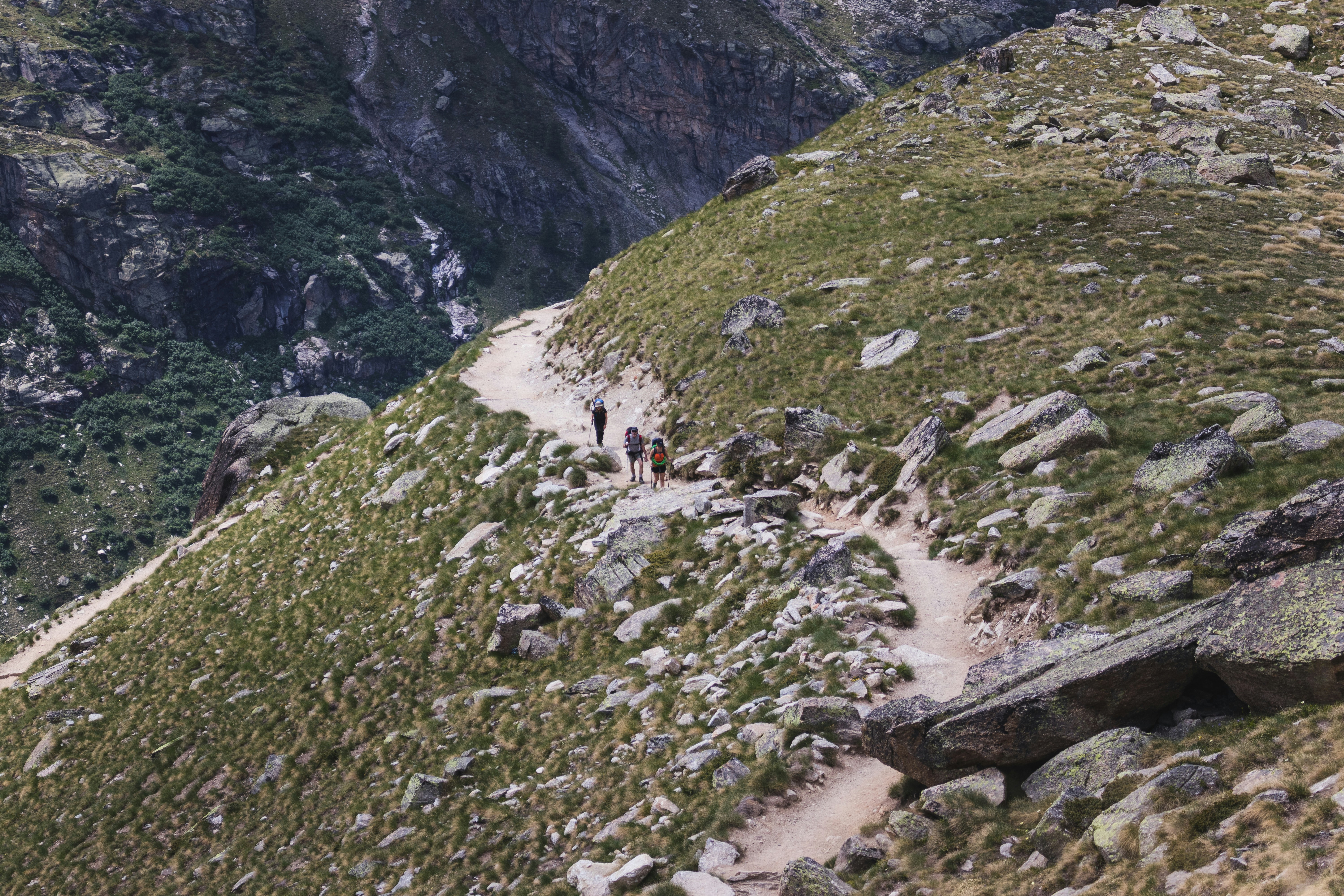Introduction to the UNESCO Trail
The UNESCO Trail across Europe represents a rich tapestry of cultural, historical, and natural heritage, inviting travelers to explore some of the continent’s most treasured landmarks. This route is a unique itinerary that connects various UNESCO World Heritage Sites, providing an exceptional opportunity to appreciate and discover the vast diversity of Europe’s heritage. The UNESCO designation signifies that these sites hold outstanding universal value, making them invaluable for understanding human history and natural beauty.
Traveling along the UNESCO Trail allows participants to experience an array of perspectives on European heritage. The route encompasses impressive architectural feats, significant archaeological sites, dense cultural landscapes, and breathtaking natural terrains. Each site encapsulates intricate stories and traditions, revealing the narratives that shape nations and communities. From the historic centers of cities like Rome and Prague to the serene landscapes of the Swiss Alps and the lush vineyards of France, the UNESCO trail weaves together these experiences into a cohesive journey.

In addition to providing cultural enrichment, the UNESCO Trail serves as a sustainable travel initiative, encouraging responsible tourism and conservation efforts. By prioritizing visits to sites recognized for their inherent value, travelers contribute to the protection and preservation of these locations for future generations. This emphasizes the importance of awareness and education regarding the cultural and natural significance of the sites included in the trail. Ultimately, the UNESCO Trail across Europe not only offers a remarkable exploration of heritage but also fosters a deeper appreciation for the shared history that binds us all.
Historical Significance of UNESCO Sites in Europe
Europe is renowned for its rich tapestry of history, and UNESCO World Heritage Sites serve as the custodians of this heritage. Each site encapsulates stories of significant historical events, architectural prowess, and cultural milestones that have shaped the continent’s identity. The designation of these sites is not merely a nod to their uniqueness; it underscores their role in illustrating various narratives that define European civilization.
One of the most notable examples is the Acropolis of Athens, which stands as a testament to the glory of ancient Greece. This monumental complex reflects the zenith of classical architecture and houses the Parthenon, an enduring symbol of democracy and philosophy. This site highlights the profound influence of Greek culture on Western civilization, making it a prime example of Europe’s historical significance.
Similarly, the Roman Colosseum, a marvel of engineering, offers insights into the social and political fabric of ancient Rome. This iconic arena, which hosted gladiatorial contests and public spectacles, epitomizes the grandeur of the Roman Empire and its lasting impact on law, governance, and urban planning in Europe and beyond.
Moving to the northern regions, the Historic Town of Tallinn reflects the blend of influences that has shaped Baltic culture over centuries. The well-preserved medieval architecture of its Old Town tells a story of trade and cultural exchange that flourished in the Hanseatic League, highlighting the interconnectedness of different nations and their histories.
Moreover, the Neolithic Flint Mines of Spiennes and the prehistoric monuments of Stonehenge showcase early human ingenuity and social organization. These sites allow us to trace the evolution of humankind and our understanding of life and ritual practices throughout history.
By preserving these significant sites, UNESCO not only honors Europe’s complex past but also enhances global understanding of human achievement. The recognition of such locations facilitates preservation efforts while encouraging educational initiatives and cultural tourism, thereby ensuring their stories continue to resonate for future generations.
Natural Wonders Along the Trail
The UNESCO Trail across Europe is not only a pathway through history and culture but also a corridor that showcases some of the continent’s most breathtaking natural wonders. This trail invites travelers to explore a variety of national parks, natural reserves, and sites of ecological significance that highlight Europe’s diverse landscapes and rich biodiversity. Each of these locations plays a crucial role in preserving the natural heritage of the continent and offers a unique experience for nature enthusiasts.
One remarkable site along the UNESCO Trail is the Plitvice Lakes National Park in Croatia. Known for its cascading waterfalls and vibrant turquoise lakes, this park is a UNESCO World Heritage Site that exemplifies the importance of aquatic ecosystems. The diverse flora and fauna found in Plitvice serve as a testament to the ecological richness and need for conservation efforts. Visitors can enjoy scenic hiking trails that meander through lush forests, providing opportunities to observe the park’s wildlife and geological features.

Similarly, the Swiss Alps are a highlight of this trail, encompassing several UNESCO biosphere reserves that protect the mountain ecosystems. The picturesque landscapes of towering peaks, meadows, and glacial lakes provide a dramatic backdrop for outdoor activities such as hiking, skiing, and climbing. The Swiss Alps symbolize the intrinsic link between nature and culture, making them a vital part of Europe’s natural heritage.
Another significant location is the Dolomites in Italy, renowned for their stunning rock formations and unique geological history. The entire region is recognized for its exceptional natural beauty and cultural significance. These mountains not only offer breathtaking views and challenging trails but also support a diverse range of plant and animal species, highlighting the importance of sustainable tourism practices.
As travelers navigate the UNESCO Trail, they are encouraged to appreciate the splendid natural environments while recognizing the need for their preservation. By promoting responsible exploration and conservation awareness, visitors can ensure that these natural wonders remain for future generations to enjoy.
Cultural Experiences: Festivals and Local Traditions
As travelers embark on the UNESCO Trail across Europe, they are greeted with a rich tapestry of cultural experiences that highlight the continent’s diverse heritage. One of the most immersive ways to appreciate local culture is through participating in festivals and traditions unique to each region. These events often showcase traditional music, dance, and rituals, allowing visitors to connect with the local community in meaningful ways.
Throughout the year, various festivals are celebrated across Europe, each offering its own unique experience. For instance, the Carnival of Venice in Italy exemplifies a splendid blend of historical costume and vibrant celebrations, embodying Venetian culture. Similarly, Oktoberfest in Germany is renowned for its celebration of beer, traditional foods, and lively music, attracting visitors from around the globe. Such festivals not only serve as entertaining experiences but also provide insight into the customs and practices that have been passed down through generations.
Alongside these festivals, travelers can indulge in local cuisines that reflect the region’s identity. Each UNESCO site is often accompanied by distinctive culinary offerings, from tapas in Spain to pastry delicacies in France. Engaging with local markets, where one can taste authentic dishes prepared with traditional recipes, enhances the cultural journey. For instance, sampling authentic Greek moussaka or enjoying the rustic flavors of Hungarian gulyás allows visitors to savor the essence of these nations.

Moreover, participating in local customs, such as traditional dances or artisan workshops, can greatly enrich the travel experience. Tourists are encouraged to seek out opportunities to join in community-driven events, which typically offer workshops on traditional crafts or lessons in local dances, thereby deepening the connection between visitors and the cultures they are exploring.
Itinerary Suggestions for Different Traveler Types
When planning a journey along the UNESCO Trail Across Europe, it is essential to consider the interests and preferences of various types of travelers. This approach will ensure that the experience is tailored, enriching, and memorable. Below are customized suggestions tailored to families, adventure seekers, history buffs, and cultural explorers.
For families traveling with children, a budget-friendly itinerary can include sites that provide educational opportunities along with recreational activities. Starting from the historic city of Barcelona, families can explore the iconic Sagrada Familia and then head to Park Güell for some outdoor fun. Continuing the journey, families should consider visiting the Alhambra in Granada, where kids can marvel at its enchanting architecture and gardens. This route allows for a smooth blend of learning and leisure.
Adventure seekers will delight in a more active itinerary. Beginning in the Dolomites, Italy, travelers can embark on thrilling hikes that lead to breathtaking vistas. Activities such as rock climbing and mountain biking are also abundantly available. Following this, a zip-line experience in the Swiss Alps adds an exhilarating twist before concluding with the scenic fjords of Norway. This adventurous route maximizes outdoor exploration and raises the adrenaline levels during travel.
History buffs will find unique opportunities along the trail, starting in Rome with a visit to the Colosseum and the Roman Forum. A journey through Athens to explore the Acropolis can provide insights into ancient civilizations. From there, they can travel to Paris to visit the Palace of Versailles, a highlight of royal history. Each of these destinations is steeped in historical significance, promising an enriching experience filled with fascinating stories.
Cultural explorers might prefer a more immersive experience, beginning in Istanbul, where East meets West. Engaging with local artisans and experiencing authentic cuisine can be pivotal. Progressing to the vibrant streets of Lisbon, travelers can enjoy Fado music and traditional crafts. A final destination in Vienna allows for exploration of classical music and art museums, ensuring a comprehensive journey through Europe’s rich cultural landscape.
Transportation Options Along the Trail
Traveling along the UNESCO Trail across Europe offers a variety of transportation options that cater to the diverse needs of adventurers. The trail encompasses numerous cultural landmarks and natural wonders, making efficiency in transportation essential. Primarily, trains provide a convenient and scenic way to traverse long distances, linking major cities and UNESCO sites. Europe boasts an extensive rail network, making train travel not only efficient but also economical, with various options like high-speed trains and regional services catering to different budgets. Early bookings can yield substantial savings, with discounts often available for advanced reservations.
In addition to trains, buses serve as a viable alternative for those wishing to reach destinations not directly accessible via rail. Numerous intercity and regional bus services operate throughout Europe, typically at lower costs than train travel. Although travel times may be longer, buses can offer a more direct route to specific UNESCO sites, particularly in rural areas. Websites and mobile applications dedicated to public transport can be valuable resources for checking schedules, booking tickets, and comparing prices.
For the environmentally conscious traveler, cycling is an increasingly popular option along the UNESCO Trail. Many countries in Europe have developed dedicated bike paths or routes that parallel the trail, allowing for a more immersive experience of the landscape. Rent-a-bike services and guided cycling tours can enhance this experience, providing travelers the opportunity to explore at their own pace while enjoying breathtaking views of cultural and natural sites.
When planning a trip along the UNESCO Trail, it is crucial to consider transportation logistics. Travelers should account for travel times, frequency of service, and the costs associated with each mode of transport. Anticipating possible delays and incorporating buffer time into travel itineraries will enhance overall enjoyment of the journey. By exploring these transportation options, travelers can effectively navigate the trail and fully appreciate its rich offerings.
Accommodation Recommendations Near UNESCO Sites
When planning a journey along the UNESCO Trail across Europe, selecting the right accommodation can significantly enhance your travel experience. There are diverse options available, catering to various preferences and budgets while ensuring proximity to UNESCO World Heritage Sites. Whether you seek luxurious hotels or charming guesthouses, the following recommendations will provide ample choices for your stay.
For those who prefer a touch of luxury, many cities hosting UNESCO sites boast high-end hotels that offer exceptional amenities and services. Properties like the Hotel de Crillon in Paris, situated near the iconic Notre-Dame Cathedral, provide sumptuous accommodations paired with breathtaking views. These establishments often feature gourmet dining options, spa services, and enriching cultural experiences that align with the local heritage.
For travelers on a mid-range budget, boutique hotels and well-rated hostels are abundant. Hotel Victoria in Berlin, for example, is located near the UNESCO-listed Museum Island. This hotel combines modern comforts with a scenic location, making it an ideal base for exploration. Alternatively, hostels such as Be Hostels in Lisbon offer budget-friendly rates without compromising on comfort. They present a unique opportunity to meet fellow adventurers while enjoying easy access to the city’s historic attractions.
Lastly, quaint guesthouses and bed-and-breakfasts can provide a unique local experience, allowing you to immerse yourself in the culture of the surrounding area. Properties like Casa da Insua in Portugal not only offer delightful accommodations but also often include traditional meals and insights from local hosts, enriching your visit to UNESCO listings.
In summary, no matter your budget or travel style, ample accommodation options near UNESCO sites across Europe ensure a comfortable and memorable stay while you embark on this remarkable cultural journey.
Travel Tips for Navigating Europe’s UNESCO Trail
Traveling across Europe’s UNESCO Trail offers a unique opportunity to immerse oneself in a rich tapestry of history and culture. To optimize the experience, there are several practical travel tips that can help visitors navigate these remarkable sites effectively and respectfully.
First and foremost, utilizing local guides can greatly enhance your understanding of the various UNESCO World Heritage sites. These knowledgeable individuals possess insights into the historical significance and cultural heritage that might not be evident to a casual observer. Engaging with local experts not only enriches the experience but also supports the local economy, contributing to sustainable tourism practices.
Visitors should also take the time to research each site beforehand, as many UNESCO locations have specific guidelines and rules to ensure their preservation. These might include restrictions on photography, rules regarding touching structures, or designated pathways to follow. Familiarizing oneself with these regulations is essential for maintaining the integrity of these cultural landmarks and ensuring that they can be enjoyed by future generations.
Respecting the local customs and traditions is another critical aspect of traveling along this UNESCO Trail. Each destination has its unique cultural practices, and demonstrating awareness and respect can enhance interactions with locals. This may include understanding appropriate dress codes, greeting customs, and local dining etiquette. Such respect fosters a positive connection between travelers and host communities, enriching the overall experience.
Lastly, sustainable tourism practices should be a priority for those traversing the UNESCO Trail. This includes minimizing waste, using public transportation when possible, and opting for eco-friendly accommodations. By adopting these practices, travelers can help mitigate their environmental impact and contribute to the preservation of these invaluable sites for future visitors.
Conclusion: The Lasting Legacy of the UNESCO Trail
The UNESCO Trail across Europe serves as more than an enticing route for tourists; it is an enduring testament to the rich and diverse cultural heritage of the continent. Each UNESCO site along this route embodies unique historical narratives, architectural brilliance, and vibrant cultural traditions. They are crucial markers of humanity’s shared history and serve as reminders of the struggles, triumphs, and artistic endeavors that have shaped nations over centuries. As travelers traverse this remarkable trail, they are not merely observers; they become active participants in a global heritage conversation.
The importance of preserving these UNESCO sites cannot be overstated. They provide invaluable insights into our collective past and help maintain a sense of identity within communities. These sites foster appreciation for cultural diversity and promote understanding among people of different backgrounds. The role of tourists extends beyond enjoyment and exploration; responsible visitation can contribute to the ongoing preservation efforts. By following guidelines, supporting local economies, and engaging in sustainable practices, travelers can help ensure that these sites endure for generations to come.
Moreover, the UNESCO Trail offers an opportunity for educational enrichment. Visitors can engage with local traditions, partake in regional events, and learn about the historical contexts that give each site its significance. Such interactions deepen one’s appreciation for the nuances of cultural heritage and underscore the importance of safeguarding it. By doing so, travelers not only create memories but also contribute to a lasting legacy that honors the past while inspiring future generations to embrace and celebrate our collective identity.






